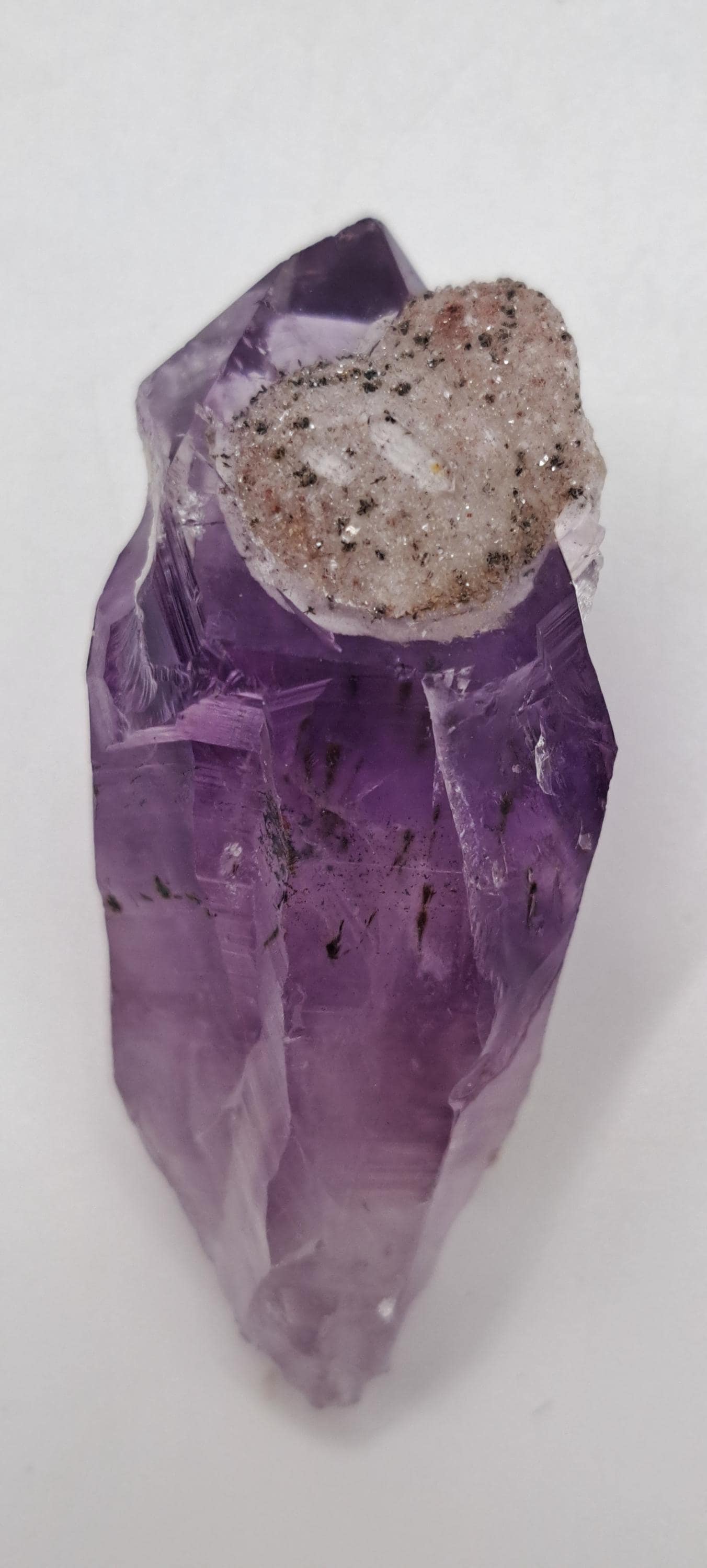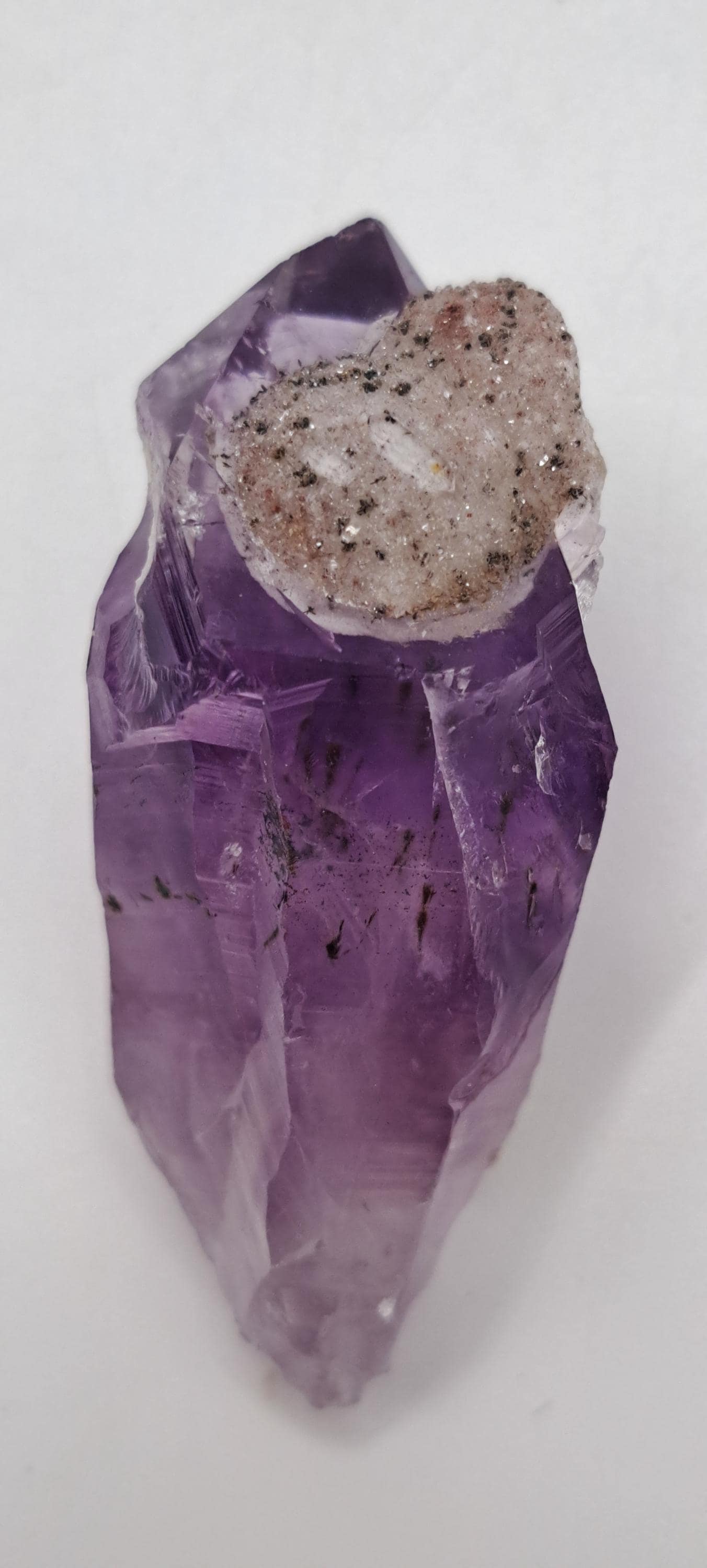
Amethyst, one of the most beloved gemstones in the world, is often celebrated for its deep purple hues and tranquil energy. But what if we told you that some specimens hold an even deeper mystery?
Roughly a year before lab testing confirmed the presence of Fluorite within these rare specimens, we were in conversation with our dear friends in Brazil — a family whose long-standing connection to the land has brought many extraordinary minerals to light. During that exchange, they casually mentioned having come across some highly unusual amethyst with inclusions unlike anything they’d seen before. Intrigued, we suggested that the material be tested to better understand its composition. Little did any of us know the remarkable journey that simple suggestion would spark. These specimens from Ametista do Sul would go on to reveal one of the most unexpected mineral associations we’ve ever encountered — a Quartz-Fluorite intergrowth that not only challenges assumptions about Amethyst, but reshapes how we view the formation processes in this region of Brazil.
The Discovery: Fluorite in Amethyst
When we first encountered these remarkable Amethyst specimens, we were immediately captivated by their stunning visual appeal. The Amethyst itself is a rich purple, crowned with mounds of sparkling Quartz. But it was the unexpected discovery of Fluorite within these formations that set them apart from typical Amethyst pieces. Through detailed lab testing, including backscattered electron imaging and energy dispersive spectroscopy (EDS), Fluorite was confirmed as a component of these specimens.
Notably, the Fluorite is part of what appears to be an original Quartz-Fluorite intergrowth, which suggests that it played a role in shaping the formation's internal structure. This unique mineral combination also includes Goethite, Hematite, and Epidote, which add layers of complexity and beauty to the specimens.
Fluorite’s Role in Mineral Formation
Known for its vibrant range of colors, often appearing in shades of purple, green, and yellow. In this particular instance, the fluorite was identified not only through its visual characteristics but also by its distinct crystal structure as seen under high-resolution imaging. The cellular texture and the Iron Oxide deposits that accompany the Fluorite suggest that these minerals grew together in a dynamic, multi-stage process. This discovery underscores the intricate processes at play during mineral formation. The coexistence of Fluorite with Hematite (a reddish Iron Oxide), Goethite (often found in dark sprays or nodules), and Epidote (recognized for its green crystals) offers new insights into the geological environment of Ametista do Sul and the interplay between minerals in this area.
Museum Accessions: Honoring the Brazilian Family
We are deeply honored to share that select specimens from this rare find have been accessioned into the collections of the Carnegie Museum of Natural History and the Harvard Mineralogical & Geological Museum. These specimens were credited solely to the Brazilian family from whom they were acquired. This gesture is an acknowledgment of their essential role in bringing these extraordinary minerals to light. While we've had specimens accessioned under our own name in the past, this time we felt it was especially meaningful to honor the family that made this discovery possible. Their contribution is not just a part of the mineral world’s history but is a legacy worth preserving.
We are proud to offer a selection of these unique Amethyst specimens for purchase at our in-person shows. The discovery of Fluorite within Amethyst is an incredible find that enhances our understanding of both mineral formation and the unique mineral associations that make this area so special. If you’re a mineral collector or enthusiast who’s interested in these exceptional pieces, be sure to check our show schedule to see where we'll be next. These rarities are truly a once-in-a-lifetime find, and we’re excited to share them with our community.
All information presented in this blog post is the intellectual property of the author. No part of this content may be reproduced, distributed, or transmitted in any form or by any means without the express permission of the author. Unauthorized use of the content is strictly prohibited and may result in legal action. Please contact the author for permission to use any material from this blog post.
#rareamethyst

